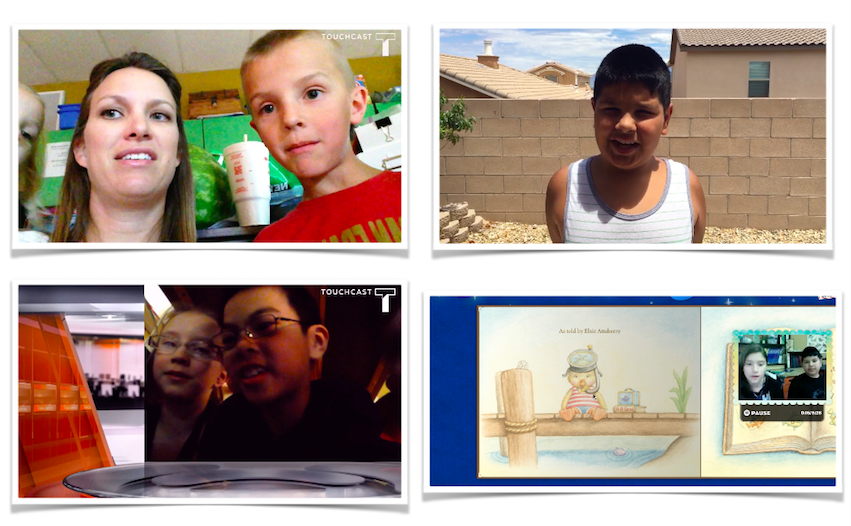Divine inspiration or pure insanity. These are the only possible reasons of why “Virtual Team Teaching” is successful within an elementary school setting. What is this technology teaching thing? A new curriculum? A professional development book? Essentially, it is two teachers who have combined two grade level standards, at two different schools, to create one virtual, collaborative, environment. Our initial intentions were basic. Students shared information about themselves using QuickTime videos to get to know each other. Then it progressed to students educating each other about topics they were studying in class. Finally, it evolved into an inexplicable entity we never expected. Not only had it become a student centered pedagogy, but a student created pedagogy. Take one of our favorite collaborative moments. Centered around an integrated health unit, our students were communicating over a video-conferencing tool, while simultaneously working on a shared cloud document. These second and fourth grade children were working on a spreadsheet, interpreting data, promoting word processing skills, collaborating and discussing information, while carrying themselves with poise, respect, and confidence. Our students embodied the art meaningful, productive communication. Due to the digital aspect of this endeavor, students began interacting with the unknown across a virtual void. Because of this, students had the opportunity to redefine and shape themselves while learning about different peers, different experiences, and different cultures. Perhaps it is best described by our students, “This has changed our learning so much that we feel like we are now the teachers. We have a different point of view.” With more teachers involved, the possibilities of what this style of teaching can accomplish is limitless. It is truly a testament not only to the power of technology, but more importantly the potential of the innate learner in each of our students.
The Inspiration and Insanity of Virtual Team Teaching: A Guest Blog by Rachel Thomas & Steven Lamb

